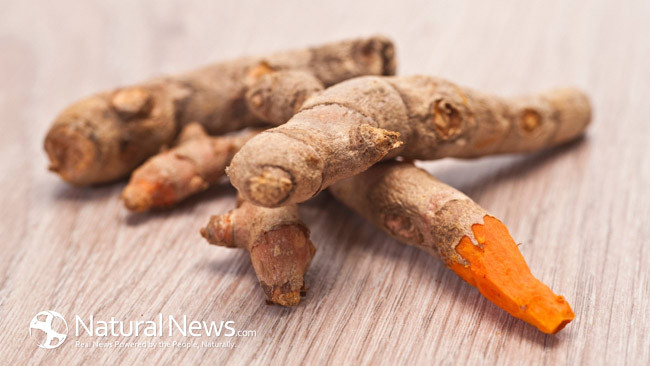Exploring the many therapeutic properties of curcumin
01/12/2021 / By Evangelyn Rodriguez

In this article, a researcher from India discussed the beneficial effects of curcumin from Curcuma longa (turmeric) that have been reported by several studies. This review was published in the International Journal of Herbal Medicine.
- Curcumin is a phenolic compound found in the roots of C. longa, a medicinal plant that belongs to the Zingiberaceae, or ginger, family.
- Curcumin, along with two other curcuminoids — demethoxycurcumin and bis-demethoxycurcumin — is responsible for turmeric’s yellow color.
- Curcumin exhibits a wide variety of beneficial effects on human health, and its biological activities are said to be helpful in preventing certain diseases.
- Plant-derived chemicals like curcumin have attracted considerable interest recently because of their pharmacological properties.
- Some of the widely reported properties of curcumin include anti-inflammatory, antioxidant, neuroprotective, cardioprotective, anti-diabetic and anti-cancer activities.
- Curcumin is believed to exert its beneficial effects by modulating the activities of several important molecular targets, such as transcription factors, growth factors, cytokines and cell cycle proteins.
- Extensive epidemiological, clinical and animal studies have elucidated many of the molecular mechanisms underlying curcumin’s biological effects.
Because of their medicinal properties, the researcher supports the use of natural products like curcumin either as a pure compound or an extract in pharmaceutical preparations.
Journal Reference:
Sharma C. CURCUMIN: A MULTIFACETED HERBAL MEDICINE. International Journal of Herbal Medicine. 2019;7(3):52-58.
Tagged Under: alternative medicine, curcumin, food cures, food is medicine, functional food, herbal medicine, Herbs, natural cures, natural medicine, phytonutrients, remedies, research, turmeric




















